Species Invasive
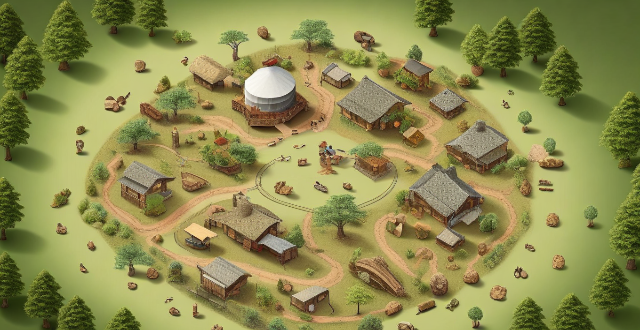
How do invasive species affect biodiversity ?
Invasive species can have a significant impact on native biodiversity, both positively and negatively. They can outcompete and replace native species, leading to changes in community structure and ecosystem function. Invasive species can also cause damage to infrastructure and human health through the spread of disease or destruction of habitats. Management strategies for invasive species include prevention measures such as quarantines and biosecurity protocols, as well as control measures such as eradication programs and habitat restoration. It is important to consider the costs and benefits of each strategy when developing a management plan.

How do invasive species interact with climate change to threaten native biodiversity ?
Invasive species and climate change pose significant threats to native biodiversity by exacerbating range expansion, altering competition, increasing predation pressure, degrading habitats, facilitating disease transmission, disrupting mutualisms, having synergistic effects, depleting resources, displacing keystone species, and reducing ecosystem resilience. Integrated management strategies are crucial for mitigating these threats and include habitat restoration, invasive species control, protection of keystone species, and conservation of diverse genetic pools within native species to enhance their adaptability.

What are the impacts of global warming on ecosystems and species diversity ?
Global warming, primarily caused by human activities, significantly impacts ecosystems and species diversity. These effects include habitat loss, altered species interactions, the spread of invasive species, disease proliferation, ocean acidification, melting permafrost, changes in fire regimes, water stress, sea level rise, coral bleaching, increased extinction risk, shifting ranges, population declines, adaptation challenges, loss of genetic diversity, behavioral changes, phenological shifts, reproductive challenges, physiological stress, and disrupted mutualisms. Addressing these issues requires immediate action to reduce greenhouse gas emissions and adapt to the changing climate.

What are the consequences of climate change for wildlife and ecosystems ?
Climate change has significant consequences for wildlife and ecosystems, including habitat loss, changes in species distribution, impacts on biodiversity, altered ecological processes, invasive species spread, pest outbreaks, and human health risks. It is crucial to take action to mitigate these impacts by reducing greenhouse gas emissions and implementing conservation measures.
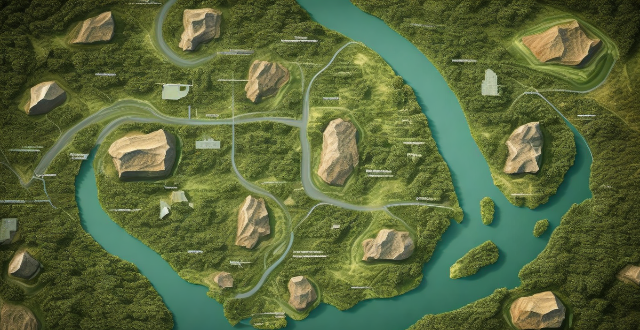
Can climate change cause extinction of certain species ?
Climate change has the potential to cause the extinction of certain species through a variety of mechanisms including rising temperatures, changes in precipitation patterns, loss of habitat, and disruption of food webs. It is essential that we take action to mitigate the effects of climate change and protect vulnerable species before it's too late.

What are the impacts of climate change on tree species diversity in forests ?
Climate change significantly impacts tree species diversity in forests through altered growth and reproduction patterns, range shifts, disturbance regimes, direct physiological effects, and changes in ecosystem services. These impacts not only affect the health and structure of forests but also have broader ecological and societal implications.

How does climate vulnerability affect the environment ?
Climate vulnerability refers to the degree to which a system is susceptible to, and unable to cope with, adverse effects of climate change. This vulnerability can have profound impacts on the environment, affecting ecosystems, biodiversity, and the services they provide to humans. Key points include changes in ecosystems, loss of biodiversity, impacts on water resources, food security, and coastal systems. These changes can lead to altered migration patterns, changes in vegetation, disruption of life cycles, habitat loss, extreme weather events, invasive species, changes in snowmelt patterns, rainfall changes, shifting climate zones, pest and disease outbreaks, sea level rise, and ocean acidification. Addressing climate change is essential for the survival of countless species and the well-being of human societies that depend on the services provided by healthy ecosystems.
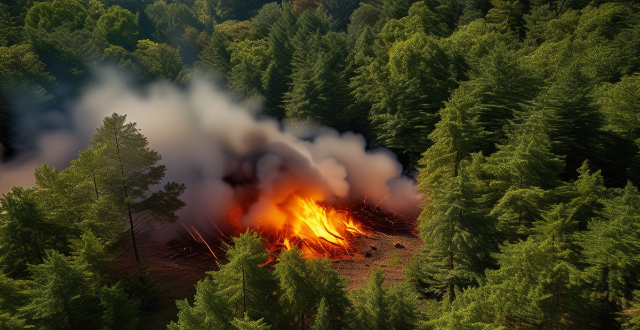
How does climate change affect forest ecosystems ?
Climate change affects forest ecosystems in numerous ways, including changes in temperature and precipitation, shifts in tree species distribution, alterations in fire regimes, increased pest and disease outbreaks, and reduced carbon sequestration. These impacts can lead to heat stress for trees, altered seasonal events, changes in tree growth rates, increased wildfire risk, and even tree mortality during extreme droughts. Invasive species may also outcompete native trees, further altering the structure and function of forest ecosystems. Addressing these challenges will require a multifaceted approach that includes reducing greenhouse gas emissions, protecting and restoring forests, and adapting to changing conditions.

What are the potential long-term consequences of climate change for future generations ?
The potential long-term consequences of climate change for future generations include environmental, social, and economic impacts. Environmentally, rising sea levels can cause coastal erosion and loss of island nations, while extreme weather events like hurricanes and wildfires become more frequent. Biodiversity loss is also a major concern, with species extinction and the spread of invasive species disrupting ecosystems. Socially, food security is threatened by changes in crop yields and water scarcity, while health risks increase due to heat-related illnesses and the spread of diseases. Displacement and migration may lead to conflict and instability. Economically, decreased productivity in agriculture and fisheries, increased adaptation and mitigation costs, and job losses contribute to economic instability. Addressing climate change requires global cooperation and significant investments in both adaptation and mitigation strategies to ensure a sustainable future.
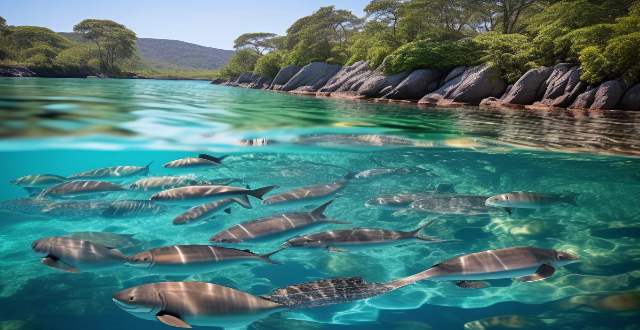
How might climate change influence the distribution and abundance of aquatic species ?
Climate change significantly impacts the distribution and abundance of aquatic species by altering water temperature, pH levels, salinity, and oxygen availability. These changes affect habitats and life cycles of aquatic organisms, causing direct and indirect effects on their survival, growth, reproduction, and community interactions. Some species show resilience through genetic adaptation or phenotypic plasticity. Proactive conservation efforts are crucial for maintaining biodiversity and ecosystem health amid climate shifts.
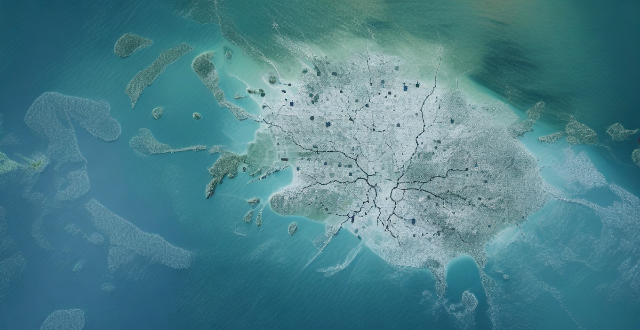
How is global warming impacting biodiversity and endangered species ?
Global warming is impacting biodiversity and endangered species through habitat loss, changes in weather patterns, and increased disease outbreaks. Habitat loss occurs as species are forced to migrate due to rising temperatures, leading to competition for resources and loss of habitats. Changes in weather patterns cause extreme events like droughts, floods, and storms, disrupting ecosystems and potentially leading to species extinction. Additionally, global warming contributes to the spread of diseases among wildlife populations, posing a threat to endangered species. It is crucial to take action to mitigate the effects of global warming and protect vulnerable populations.

How should we prioritize the protection of endangered species and ecosystems ?
The protection of endangered species and ecosystems is a critical issue that requires immediate attention. Here are some strategies we can employ to prioritize their protection: 1. Conduct comprehensive surveys and studies to identify and understand the current state of endangered species and ecosystems. 2. Develop effective legislation and policies, such as establishing protected areas, regulating hunting and fishing, and promoting sustainable development. 3. Raise public awareness and involvement through education programs, community involvement, and media campaigns. 4. Collaborate internationally by signing international agreements, sharing knowledge and resources, and coordinating conservation efforts. By taking these steps, we can work towards ensuring the survival of our planet's diverse flora and fauna for future generations.

What role do protected areas play in maintaining biodiversity ?
The article discusses the importance of protected areas in maintaining biodiversity, highlighting their roles in habitat preservation, species protection, and ecosystem services. It also addresses the challenges of effective management, connectivity, and global cooperation for conservation efforts. The text emphasizes that protected areas are essential for safeguarding endangered species, supporting ecological processes, and mitigating climate change, but their success depends on balanced management, sufficient resources, and international collaboration.

What are the latest trends in non-invasive beauty treatments ?
Non-invasive beauty treatments have grown in popularity as they offer cosmetic enhancements without surgery. Latest trends include microneedling for skin rejuvenation, laser hair removal for long-lasting hair reduction, chemical peels for improved skin texture, ultrasound therapy for boosting collagen production, and LED light therapy for addressing various skin concerns. These treatments cater to different aesthetic needs and are generally well-tolerated with minimal downtime.
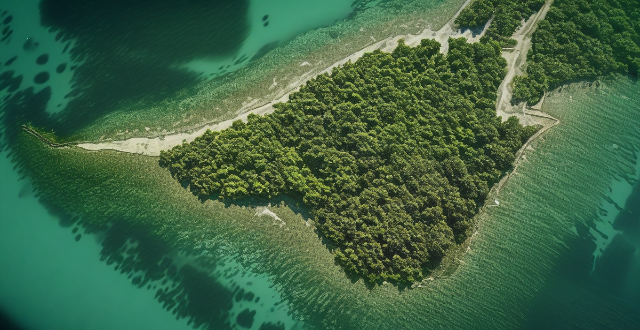
What is the relationship between climate change and loss of habitat for endangered species ?
Climate change is causing significant changes in ecosystems around the world, leading to the loss of habitat for endangered species. Rising temperatures, changing precipitation patterns, sea level rise, and extreme weather events are all factors that contribute to this loss. Endangered species are particularly vulnerable to these changes due to their small populations and limited ranges. Examples of endangered species affected by climate change include polar bears, giant pandas, leatherback turtles, and amphibians. It is essential that we take action to protect these species and their habitats, including reducing greenhouse gas emissions, conserving natural habitats, and developing adaptation strategies.

What are the potential long-term effects of global warming on ecosystems ?
Global warming, caused by greenhouse gases, can have severe impacts on ecosystems worldwide. Potential long-term effects include species extinction, changes in distribution and abundance of species, alteration of ecosystem functions, loss of habitat due to rising sea levels, and invasion of non-native species. These impacts underscore the need for action to mitigate climate change and protect ecosystems.
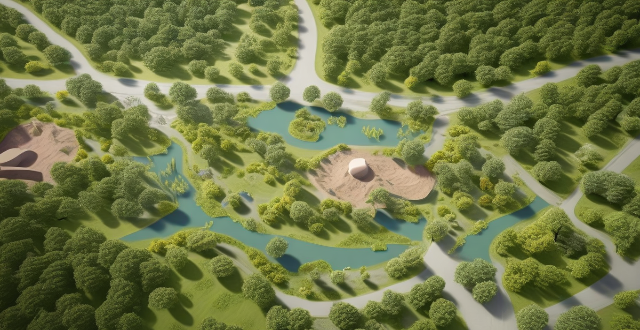
What are some successful examples of ecological protection areas around the world ?
Ecological protection areas play a crucial role in preserving biodiversity, maintaining ecosystem services, and protecting natural landscapes. Successful examples include the Great Barrier Reef Marine Park in Australia, Yellowstone National Park in the United States, Galapagos National Park in Ecuador, Banff National Park in Canada, and Sian Ka'an Biosphere Reserve in Mexico. These areas have implemented various management strategies such as zoning systems, reintroducing wolves, controlling invasive species, promoting sustainable tourism practices, involving local communities in conservation efforts, and restoring degraded areas.

How can we conserve and protect biodiversity in our local communities ?
The text discusses the importance of biodiversity and provides various ways to conserve and protect it in local communities. It suggests creating awareness through education, using media platforms, practicing sustainable living by reducing waste and conserving energy, protecting habitats by preserving natural areas and controlling invasive species, supporting local conservation efforts through volunteering and advocating for policies, and promoting eco-friendly practices in businesses. The goal is to contribute to a healthier planet by taking small actions towards biodiversity conservation.

What are the main threats to global biodiversity ?
The article discusses the main threats to global biodiversity, which include habitat loss and fragmentation due to urbanization, agricultural expansion, and mining and extraction; climate change with rising temperatures, altered precipitation patterns, and extreme weather events; pollution from chemicals, noise, and light; overexploitation through overfishing, hunting and poaching, and harvesting of plants; invasive alien species competing for resources, transmitting diseases, and altering habitats; and human population growth leading to increased consumption, waste production, and conflict with wildlife. These threats are interconnected and require coordinated efforts from various stakeholders to implement sustainable practices and protect our planet's diversity of life.
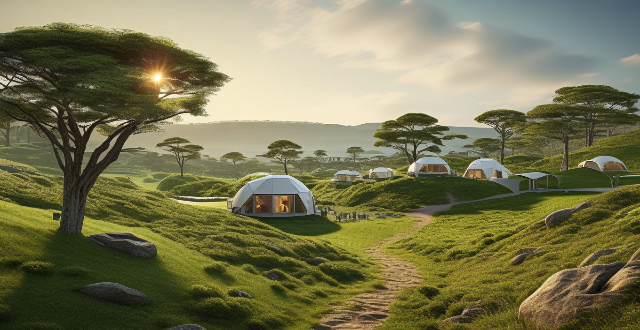
How can we protect biodiversity in the face of climate change ?
Protecting biodiversity amidst climate change involves conservation, sustainable land use, reducing carbon emissions, and education. Establishing protected areas, restoring degraded habitats, controlling invasive species, adopting agroforestry and reduced tillage farming, using integrated pest management, transitioning to renewable energy sources, improving energy efficiency, planting trees, raising awareness among decision-makers, engaging communities, and promoting ecotourism are all strategies that can help preserve our natural world for future generations.

How do urban greening projects affect biodiversity in cities ?
Urban greening projects, which aim to increase the amount of vegetation within cities, can have significant effects on urban biodiversity. These projects typically involve planting trees, creating parks and green spaces, and restoring natural habitats. Here are some ways in which these initiatives can influence the variety of species living in urban areas: - Increased Habitat Availability: By adding more greenery, urban greening provides additional habitats for a wide range of organisms. This includes plants, insects, birds, and small mammals that can thrive in these newly created environments. - Mitigation of Urban Heat Islands: Vegetation helps reduce the urban heat island effect by providing shade and releasing water through transpiration, creating cooler microclimates that are more suitable for certain species. - Enhanced Food Sources: Flowering plants attract pollinators like bees and butterflies, supporting their populations and contributing to the health of the overall ecosystem. - Increased Water Quality and Availability: Green roofs and rain gardens help manage stormwater runoff, reducing pollution and providing water sources for urban wildlife. - Promotion of Biodiversity through Education and Awareness: Parks and green spaces serve as outdoor classrooms, offering opportunities for education about ecology and conservation. While urban greening projects offer numerous benefits for biodiversity, they also present challenges such as potential introduction of invasive species, maintenance requirements, and resource allocation trade-offs with other land uses.

How does climate change influence forest fires and their severity ?
Climate change has a significant impact on forest fires and their severity. The following are some ways in which climate change influences forest fires: - **Increased Temperatures**: Hotter summers and longer fire seasons make it easier for fires to start and spread. - **Droughts and Low Humidity**: Dry conditions make vegetation more flammable and reduce the moisture content in trees and plants. - **Changes in Precipitation Patterns**: Changes in rainfall patterns can create periods of extreme dryness or wetness, both of which can contribute to wildfires. - **Wind Patterns**: Stronger winds can fan flames, causing fires to spread more rapidly and burn more intensely. - **Changes in Vegetation**: Invasive species and tree mortality can increase the risk of fires. Overall, climate change exacerbates many of the factors that contribute to the occurrence and severity of forest fires. By understanding these relationships, we can better prepare for and mitigate the impacts of these devastating events.
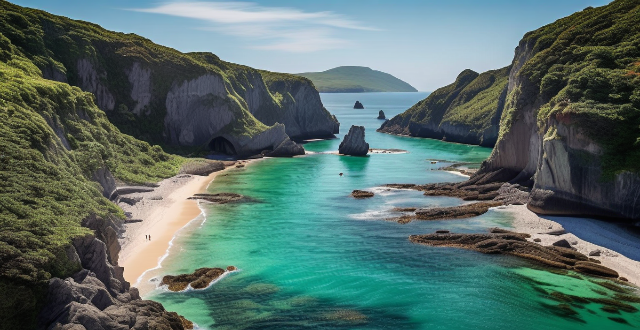
What role do ecological protection areas play in sustainable tourism development ?
Ecological protection areas are vital for sustainable tourism, conserving resources and biodiversity while offering unique experiences to visitors. They also provide educational opportunities and support local livelihoods, promoting long-term sustainability and planetary health.

How can ecological protection areas be integrated with other conservation strategies ?
Integrating EPAs with other conservation strategies is crucial for their long-term viability and effectiveness. This involves developing comprehensive landscape approaches, incorporating community-based conservation, enhancing legal frameworks, promoting sustainable development practices, conducting regular research and monitoring, and implementing education and awareness programs. These measures ensure that conservation efforts extend beyond the boundaries of EPAs and into the broader ecosystem, involving local communities, addressing human activities, and fostering a culture of environmental stewardship.

How do climate losses and damages affect biodiversity ?
The article discusses the impact of climate change on biodiversity, focusing on how extreme weather events, temperature changes, sea level rise, and altered precipitation patterns affect habitats and species. It emphasizes the need for global efforts to reduce greenhouse gas emissions and implement conservation strategies to protect vulnerable ecosystems and species.

What is the significance of genetic diversity within biodiversity ?
Genetic diversity is a vital component of biodiversity, playing a crucial role in ecosystem health and stability. It enables species to adapt to environmental changes, resist diseases, contribute to ecosystem functioning, support food security, and provide medicinal plants. However, threats such as habitat loss, overexploitation, climate change, introduced species, and pollution pose significant risks to genetic diversity. Conservation efforts must prioritize the protection and restoration of genetic diversity to ensure the long-term survival of species and ecosystems.

How does the climate emergency affect biodiversity and ecosystems ?
The climate emergency is causing significant changes in global temperatures, weather patterns, and precipitation, which have profound impacts on biodiversity and ecosystems. These effects include habitat loss and alteration due to rising sea levels, changing precipitation patterns, and temperature fluctuations. Species are being displaced or facing extinction as they struggle to adapt to new conditions, leading to disrupted food webs. The decline in ecosystem services such as water regulation, nutrient cycling, and disease regulation further exacerbates the situation. Resilience and adaptation challenges highlight the need for immediate action to mitigate damage and promote ecological resilience through conservation and sustainable practices.

How do extreme weather events, such as hurricanes and droughts, affect biodiversity ?
Extreme weather events, such as hurricanes and droughts, have significant impacts on biodiversity. These events can cause habitat loss, species displacement, and even extinction. For example, hurricanes can cause flooding, which can wash away soil and vegetation, leaving behind barren landscapes. Droughts can cause water levels to drop, leading to the death of aquatic plants and animals that rely on water for survival. When habitats are destroyed or altered by hurricanes or droughts, animals may be forced to move to new areas in search of food and shelter. This can lead to competition with native species for resources and may ultimately result in the displacement of certain species from their natural habitats. In some cases, extreme weather events can lead to the extinction of certain species. If a species is already endangered or has a small population size, a single extreme weather event could be enough to push it over the edge toward extinction. Additionally, if an entire ecosystem is destroyed by a hurricane or drought, it may take years or even decades for it to recover, putting many species at risk during that time.